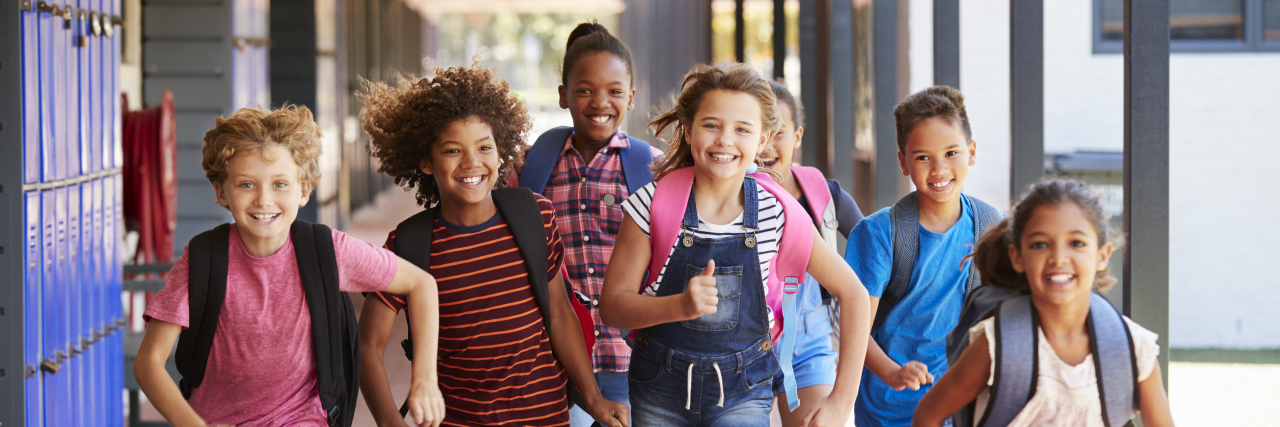It amazes me that in 2021 there’s more focus on the deficits versus the gifts diverse learners bring to the classroom. Despite there being so much talk about embracing diversity, it rarely includes neurodiversity.
Growing up, I was fortunate to go to public schools that had many programs for neurodiverse students. Even though they were segregated in separate classrooms, which thankfully has changed, I still learned many lessons from my fellow students.
Other relevant stories:
• PMDD and ADHD
• Can You Have ADHD and Depression?
• Do I Have ADHD or Am I Just Lazy?
• What is ADHD?
Patience. Compassion. Curiosity.
I truly believe my interactions with diverse learners were a key part of my own educational process.
Fast forward a few decades, and I find myself questioning if our education system has yet to truly embrace the gifts of diverse learners.
Classroom benefits
As a mom of a child with autism, I am constantly advocating for supports for my child. Supports that will not only benefit my child but other kids in the classroom.
You see, many of the modifications that are needed for neurodiverse kids are modifications that others also need. But since they don’t come with a designation (and the associated funding) their needs are often overlooked.
One simple modification is light covers. A typical classroom has a series of harsh fluorescent lights, which can be pretty intense. While it’s pretty easy and affordable to install light covers to soften the glare, this rarely happens without a parent’s advocacy. Even then, it often takes a diverse learner and a doctor’s note to make this happen.
But here’s the deal – these light covers also help kids who have sensory issues, migraines, or are just bothered by sitting under harsh lights all day.
In terms of the gifts diverse learners bring, I’ve found that the behavior adults may focus on is accepted by other students without question. Looking at a child with ADHD, the movement breaks, wiggle chairs and need to release energy is that child’s norm. Often the other students in the classroom pay little or no attention to this need to move. As for those extra movement breaks – they help all students release some of that extra energy.
Have you tried sitting behind a desk all day? It can be confining!
Many neurodiverse kids also bring a unique perspective to classroom learning. I know many kids with autism who are huge fans of Minecraft. To help them connect with the classroom lesson, a teacher may make a link to Minecraft, something that interests them. And since Minecraft is such a popular game, it will also help the other Minecraft fans sit up and listen.
Life skills
In terms of the patience, compassion and curiosity I learned as a child, the diverse learners also taught me to slow down, be calm and listen. I learned my way wasn’t the only way and that we all have our own unique learning styles.
These early learnings have helped me a lot in my training, speaking and teaching. I know I need to use a variety of tools to make a connection based on the unique needs of participants (even if I don’t know their needs). This includes a mix of storytelling, experiential learning and case studies.
I also know that going slow is key to making progress. I leave space for conversations and reflections instead of just plowing ahead with the material.
Community approach
For our schools to truly embrace the gifts diverse learners bring to the classroom, we need the entire school community to be supportive. This means parents, caregivers, teachers and support staff, not just the kids.
Sadly, it’s not uncommon for parents to request “that child” not be in their child’s classroom or question why the child is even in the school in the first place. They see diverse learners as a hindrance to their own child’s education.
When these conversations continue at the dinner table at home, the judgments and negative assumptions about diverse learners are picked up by kids and perpetuated.
Too often, schools feel uncomfortable calling out these biases and leaning into real conversations about diversity. While pink shirt day and rainbows are important, so is celebrating the gifts kids with autism, ADHD and other neurodiversities bring, instead of letting the challenges dominate the conversation.
I’m not wanting another color shirt day, but rather conversations about neurodiversity to be as common as conversations about bullying, sexuality and race. I want schools to take an honest look at the role they’re playing in perpetuating the stigma versus breaking it down.
I also want parents, caregivers and educators to celebrate the gifts diverse learners bring to the school community. Gifts that other kids recognize, but that often get overshadowed by the challenges.
By doing this, we will build a community that honours and respects all students. And students will gain important life lessons that will strengthen their character and create a more inclusive future for all.
Getty photo by Monkey Business Images.

